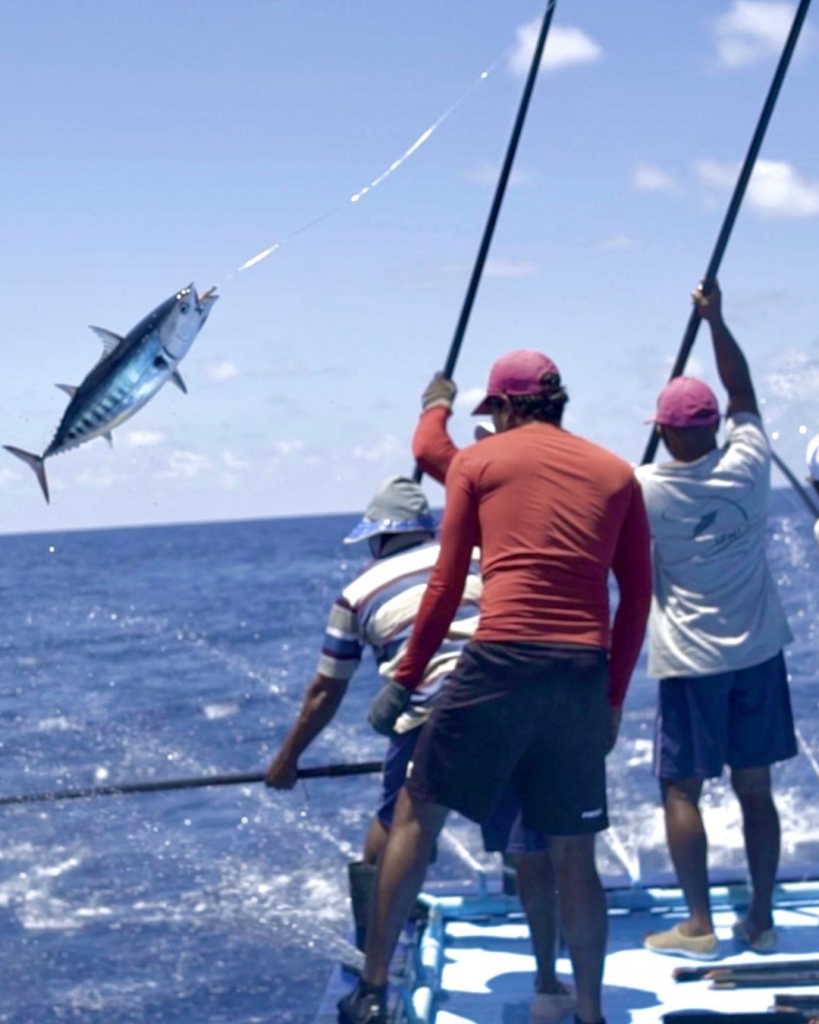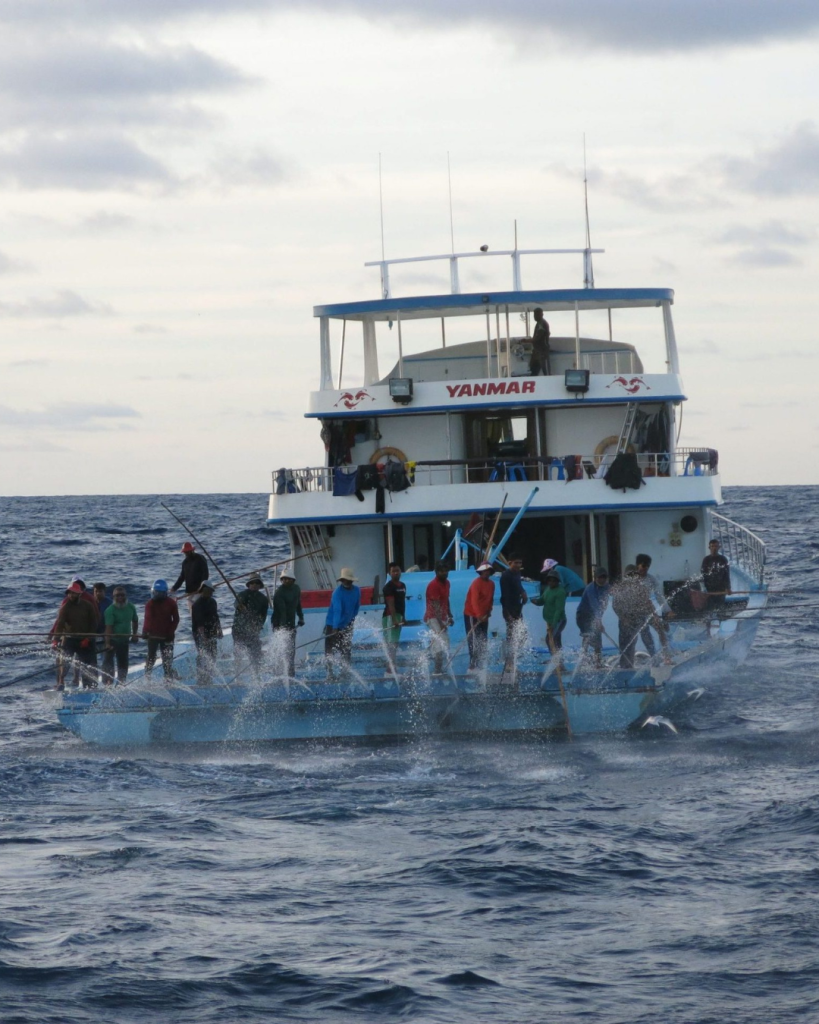The Maldivian pole-and-line fishery is one of the largest coastal fisheries in the Indian Ocean. This sustainable fishing method has been practiced for centuries; one hook, one line, one fish at a time. This is a way of life upon which the fishers and local community depend.
Pole-and-line fishing in the Maldives “has served to create an accessible and equitable form of employment to a large, and otherwise isolated, part of the population, and benefits from the fishery are spread through the economy through consumer spending, saving and re-investment, including in education” – IPNLF and Sainsbury, “A Socio-Economic Assessment of the Tuna Fisheries in the Maldives”
Content for this case study was researched and created by the International Pole and Line Foundation (IPNLF) and adapted to RISE with their collaboration. The case study was originally featured in “ACTIONING THE MONTEREY FRAMEWORK: Stories from Around the World.”
Disclaimer: This case study is intended to be used as an educational resource and does not indicate an independent evaluation or endorsement by FishWise.
Challenge
Despite strong sustainability credentials, the Maldives pole-and-line fishery is competing against highly industrialized fleets for market share and access to resources. The effects of this competition for access to major export markets means ripple effects throughout the economy, with the hardest hit being the local fishing communities due to a loss of job opportunities and sharp falls in income to primary fishers who sell their fish to processors.

Strategy
The Maldives pole-and-line fishery includes wood-hulled and fiber reinforced plastic vessels under 30 meters long. At the time of writing, over 677 vessels — with an average of 15-20 fishers per boat — are involved in pole-and-line fishing for Skipjack tuna in the Maldives.
Globally, pole-and-line supplies about 10% of the world’s canned tuna, the large bulk of which is caught in Japan, Indonesia and the Maldives in the Indian Ocean. Because it is more labor intensive than many other fishing methods, pole-and-line creates more jobs and plays an important role in livelihood security for tens of thousands of workers.
National and global recognition of the importance of the Maldives pole-and-line fishery and the extremely low levels of bycatch in pole-and-line fishing has made the Maldives tuna fishery a leader in seafood sustainability and a key player in global tuna markets.
Outcome
The Maldivian pole-and-line fishery provides a critical means of generating a livelihood, supporting some 30,000 people, or 11% of the Maldivian workforce. Pole-and-line fishers are extremely well paid compared to other Maldivian professionals; their average monthly income is at least twice as high as the national per capita average of US$1,500/month. Because the fishery is seasonal, however, pole-and-line fishers’ monthly income can fluctuate from US$400/month to US$3,000/month throughout the year.
Beyond direct benefits to fishers, pole-and-line fishing in the Maldives “has served to create an accessible and equitable form of employment to a large, and otherwise isolated, part of the population, and benefits from the fishery are spread through the economy through consumer spending, saving and re-investment, including in education” (IPNLF and Sainsbury, “A Socio-Economic Assessment of the Tuna Fisheries in the Maldives”).
The fishery generates significant economic and social benefits for both women and men from processing through distribution and on to the end consumer in the Maldives domestic market and internationally. Dry processing to produce “Maldives Fish,” a Maldivian speciality, accounts for 10,000 tonnes of fish each year, and women carry out a large proportion of these processing activities. Tuna processing is particularly important in the remote islands and atolls where employment opportunities are limited. Depending on season and catch volumes, income for workers in fish processing ranges from US$238/month to US$1,736/month.
By providing livelihood security and serving as an important source of nutrition for Maldivians, the pole-and-line fishery aligns with the Monterey Framework for Social Responsibility. Continued global recognition of the Maldivian pole-and-line fishery as environmentally sustainable and socially responsible is critical to protecting the jobs and supporting the wellbeing of thousands of people.
Looking Forward
Maldivians have the highest per capita consumption of fish in the world, eating a pound of fish a day on average Fish is the only staple food that is not imported to the Maldives and tuna alone accounts for 85% of protein consumed by Maldivians, with Maldivian citizens consuming 94kg of skipjack on average annually. Pole-and-line fishing also provides a livelihood for thousands of Maldivian families. Hence, ensuring a sustainable and competitive future for pole-and-line fisheries — including fair access to markets and recognition for its sustainable practices and importance as a source of income generation — is essential.

Facts

